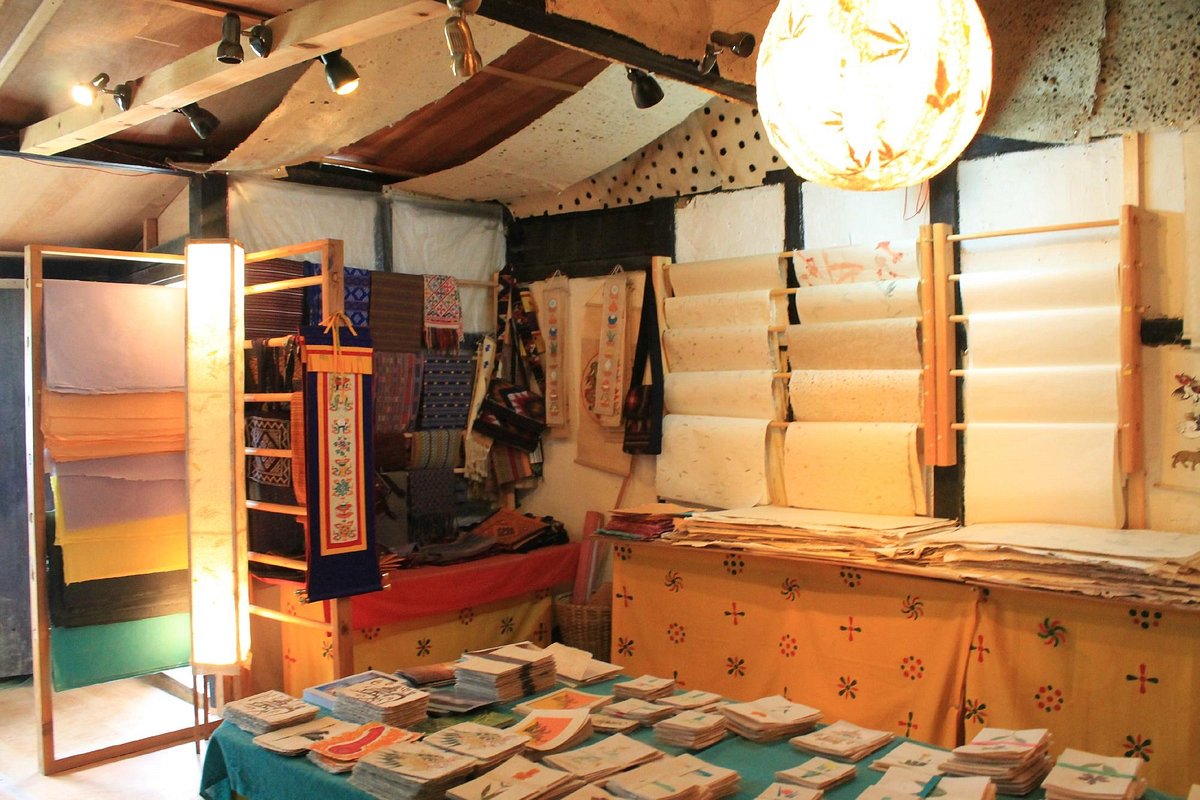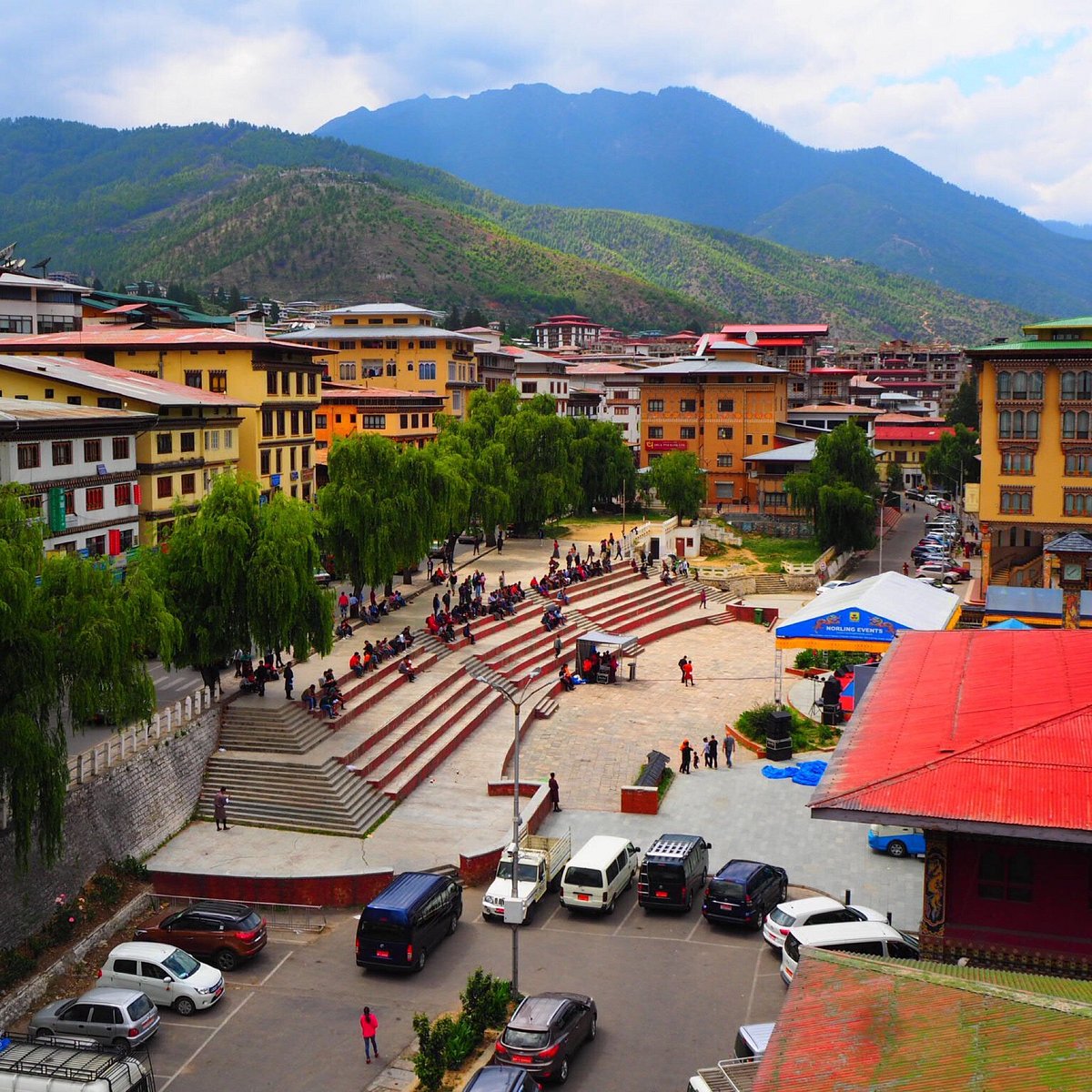1. Overview
Jungshi Handmade Paper Factory is a traditional paper-making center located just outside Thimphu city. Established in 1990, the factory preserves Bhutan’s centuries-old art of papermaking using natural bark from the Daphne plant. “Jungshi” means “natural” in Dzongkha, and true to its name, the factory promotes eco-friendly and sustainable production practices. It is a unique attraction where visitors can witness artisans turning raw bark into beautiful handcrafted paper products used for calligraphy, scripts, cards, and souvenirs.
Location – Google Maps Link
2. History
- Established in 1990 by Bhutan’s Ministry of Trade and Industry.
- Privatized in 1992 by Mr. Norbu Tenzin, who had trained in Japan.
- Name ‘Jungshi’ translates to “natural,” highlighting its eco-friendly ethos.
- Paper made here is called Deh-sho, traditionally used for religious texts and government documents.
- Materials include bark from Daphne and Dhekap trees, sustainably harvested.
- Papermaking process includes soaking, boiling, pulping, and sun-drying.
- Products include notebooks, lampshades, greeting cards, and prayer flags.
- Visitors can take guided tours and even join hands-on paper-making workshops.
- Located 1 km from Thimphu’s city center, near Centenary Farmers Market.
- Plays a significant role in preserving Bhutanese handicraft traditions.
3. What Makes Jungshi Handmade Paper Factory Popular?
This factory is a rare destination where age-old craft meets community entrepreneurship. It is a favorite among cultural tourists and craft lovers who enjoy seeing handmade artistry in action. The chance to participate in making paper and to buy authentic Bhutanese stationery makes it a rewarding and interactive cultural stop in Thimphu.
4. Overall Ratings (1 to 5 Stars)
Overall Rating: ⭐⭐⭐⭐⭐ (5/5)
Historical Significance: ⭐⭐⭐⭐☆ (4/5)
Architectural Beauty: ⭐⭐⭐☆ (3/5)
Cultural Experience: ⭐⭐⭐⭐⭐ (5/5)
Accessibility: ⭐⭐⭐⭐⭐ (5/5)
5. Weather
Best Time to Visit: March to May and September to November
Temperature Range: 10°C to 25°C
Spring and autumn months offer the best conditions for walking tours and craft workshops.
6. Nearest Five Hotels
- Taj Tashi Thimphu – Luxury hotel with elegant Bhutanese architecture
- Le Méridien Thimphu – Upscale, centrally located hotel with top-tier service
- Hotel Norbuling – Mid-range boutique stay with traditional designs
- City Hotel Thimphu – Comfortable and centrally located for sightseeing
- Druk Hotel – Well-known historic hotel in the heart of Thimphu
7. Timings
Monday to Saturday: 9:00 AM – 5:00 PM
Sunday: Closed (open on request)
Visitors are advised to arrive by mid-afternoon for complete guided tours.
8. Time Required to Visit
Visit Duration: 1 to 2 hours
This allows time to watch the entire process, engage in activities, and visit the souvenir store.
9. Entry Fees & Ticket Booking Details
Entry Fee: Free for all visitors
No advance booking is necessary. Workshops may require on-spot registration.
10. Things to See & Do
- Watch how traditional Bhutanese paper is made from raw bark.
- Participate in a hands-on workshop to make your own sheet of Deh-sho.
- Visit the retail shop to buy greeting cards, scrolls, paper journals, and lanterns.
- Learn about Bhutan’s eco-conscious practices and sustainable craft production.
- Interact with skilled artisans who carry forward this ancient craft tradition.
11. Best Time to Visit
Season: Spring (March–May) and Autumn (September–November)
Time of Day: Late morning or early afternoon for the best chance to see artisans at work
Day of Week: Weekdays for full staff operations and guided tours
12. Nearest Parking Spots
- On-site parking available beside the factory entrance
- Additional roadside parking available nearby
- Easily accessible via local taxis from anywhere in Thimphu
13. Tips for Visitors
- Wear casual clothes as workshops may involve water and pulp
- Ideal for families, school trips, and craft enthusiasts
- Great place for buying meaningful souvenirs and gifts
- Ask staff to explain the meaning of symbols on traditional paper items
- Take time to explore the small gallery showcasing Bhutanese art
14. How to Reach the Place
By Car: 5-minute drive from Thimphu city center
By Taxi: Readily available throughout the city
By Foot: A 15-minute scenic walk from town
By Tour: Included in most local craft and heritage tours
15. Nearby Attractions to Combine for the Visit
- Centenary Farmers Market – Largest local market in Thimphu
- National Textile Museum – Explore Bhutanese weaving heritage
- Folk Heritage Museum – Learn about rural life and traditional homes
- National Library of Bhutan – Houses ancient Buddhist texts
- Tashichho Dzong – Impressive fortress housing Bhutan’s government



